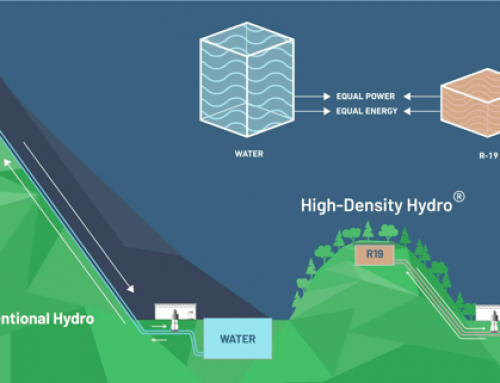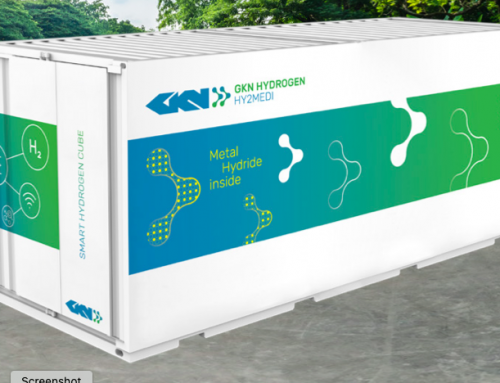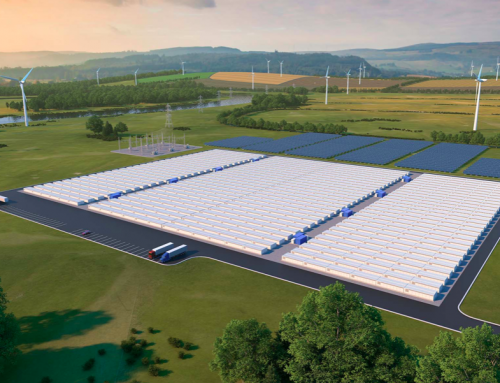By Julian Singer
While most of the renewable world is focused on storing electricity, Norwegian company EnergyNest has concentrated on storing heat. It was founded in 2011 and received the first commercial revenue from its Thermal Battery in 2016. Since then it has been expanding its range of application.
The principle is very simple: a hot fluid (oil or water) is flowed through a set of steel tubes imbedded in a special type of concrete. Heat is transferred to the concrete which holds it until needed, at which point cold fluid is sent through the tubes and is heated up. The specially designed concrete, known as heatcrete, has good thermal capacity and good thermal conductivity, so as to improve the internal heat transfer, but is also designed to expand under heat at the same rate as the steel tubes, thereby minimising the chance of cracks. It is based on quartz and is guaranteed up to 450oC.

The basic element is a cylindrical tube of heatcrete into which U-shaped steel tubes are embedded (left). These are stacked to form modules of 1.5MWth capacity (centre) that are assembled to reach the capacity required, surrounded by insulating material and placed in a box resembling a shipping container (right) (www.energy-nest.com).
By using readily available materials the cost of the system is low: US$25 per kWhth according to EnergyNest plus the engineering and hardware needed to fit it into plant where it will be used. The simplicity also means that maintenance costs should be very low, while the lifetime is quoted as a minimum of 30 and up to 50 years. The heat losses while storing are less than 2 per cent per day for large projects, so the efficiency, in terms of heat out to heat in, will normally be well over 90 per cent.
All these factors add up to a very low levelized cost of storage. In addition, a charged battery can provide heat within a minute but it can take at least 30 minutes to charge or discharge the whole battery, according to the company. Ideal storage times are therefore in the range of hours and days. What are the applications?
The battery was first tested at the Concentrated Solar Power system of the Masdar Institute in Abu Dhabi in 2015. The 1MWHth system has now run for several thousand hours with performance as predicted. Most CSP systems use molten salt to store the heat produced, but EnergyNest claims its battery can do the same for 30 to 50 per cent of the cost.
Otherwise there has been much interest from manufacturing. Most industrial manufacturing, from steel and cement through bricks and brewing, involves heat, and much of it is wasted. If this heat were to be captured it could be held in the thermal battery and fed back at a later time when it is useful. At Yara International’s fertiliser processing plant in Norway, the hot fluid from the battery is used to produce steam in different parts of the plant at critical moments in the process. The battery is acting like a buffer to improve energy efficiency.
Another application in manufacturing is to provide immediate heat while boilers are heating up.
In combined-cycle gas turbine plants the heat from the gas turbine is captured and made to produce steam. This is normally used immediately to produce electricity from a steam turbine, but it can be advantageous to store the heat and produce the extra electricity at times of high demand, when prices are high, or when the gas turbines are turned off for maintenance.
This has been taken a step further at the Sloecentrale combined-cycle gas turbine plant in the Netherlands. Their idea is to buy electricity from wind and solar farms when it is in excess and therefore at very low, even negative cost, and use it to heat the thermal battery. Then at times of peak demand, when wholesale prices are high, the battery will be used to produce steam and hence electricity from the steam turbine.
These examples with gas turbines are special cases. In general there is not much advantage in storing electrical energy as heat because steam turbines and other engines lose a large percentage of the input energy. The main application for EnergyNest is to store heat that is either produced directly by a heat generator such as a CSP or is currently being lost in industrial processes. The potential market is very large.
EnergyNest is not listed but has received funding from various public bodies and private investment funds, as well as agreements with the Masdar Institute, Siemens and others. On 13 July it received €110m from Infracapital, part of M&G plc.





